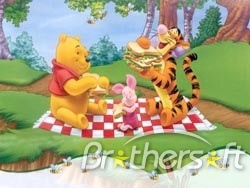In some cultures, it is believed that a person’s future or fate can be known by reading tea leaves at the bottom of their cup. When a cup of tea is finished, there is a design at the bottom that is known to supposedly withhold a person’s future path they with embark on or encounters they will have. It requires a person to ask a question, in which they can read the tea leaves to figure out the answer. This allows the trained leaf reader to impose a message or opinion upon the person who is asking the question.
The reader is given much power because of the trust and belief that the person who is asking the question has with them. The leaf reader has the power to change the story or make up an answer to impose a specific future or thought upon them. People who have their tea leaves read usually are completely devoted to the response that is shown by the leaves, which leaves them vulnerable to the media that the leaf reader can impose on them.
Croteau and Hoynes illustrate their thoughts on the social devotion to certain messages portrayed. They show this as they write “What began as a practical solution to a user problem…was now driven by commercial concerns” (327). This explains that search engines on the internet were created in order to solve people’s problems with real answers, but it has developed into an advertiser’s dreamland in which profit outweighs integrity. This is similar to the powerful position that tea leaf readers hold as they are trusted by their customers to provide an honest answer about this person’s fate. They can easily lie and tell the customer that they must get their tea leafs read every day in order to live, which would result in the leaf reader gaining profit. The powerful position that a tea leaf reader holds allows them to deliver a media message through tea leaves which influences their customer’s life.
The picture below shows a special cup and plate used to tell the specific message of the tea leaves.
This picture shows tea leaves and their message and how it is read.
The picture below shows two women having their tea leaves read by a professional reader. This prooves how the art of leaf reading has been practiced for decades. It is a powerful medium that has a historical background.
This is an advertisement against a specific kind of pants. This shows that tea leaves can be used as a powerful media advertising tool because of the strong group of followers it has.
http://www.youtube.com/watch?v=9F11rPQ3Ez0


































